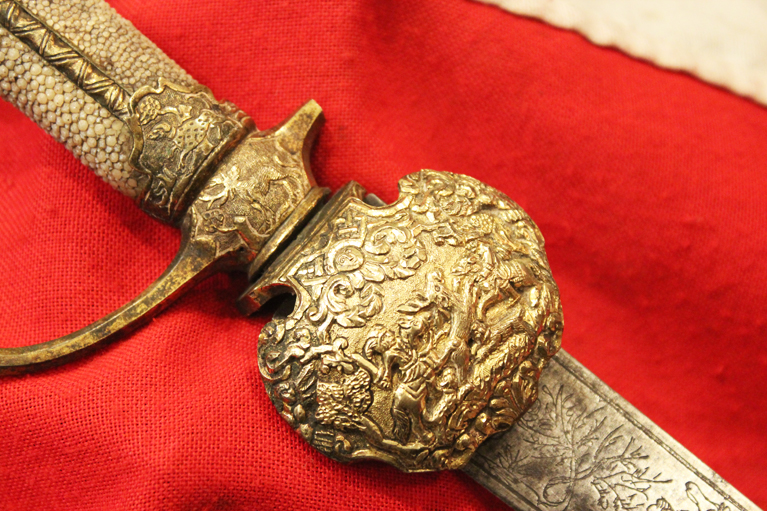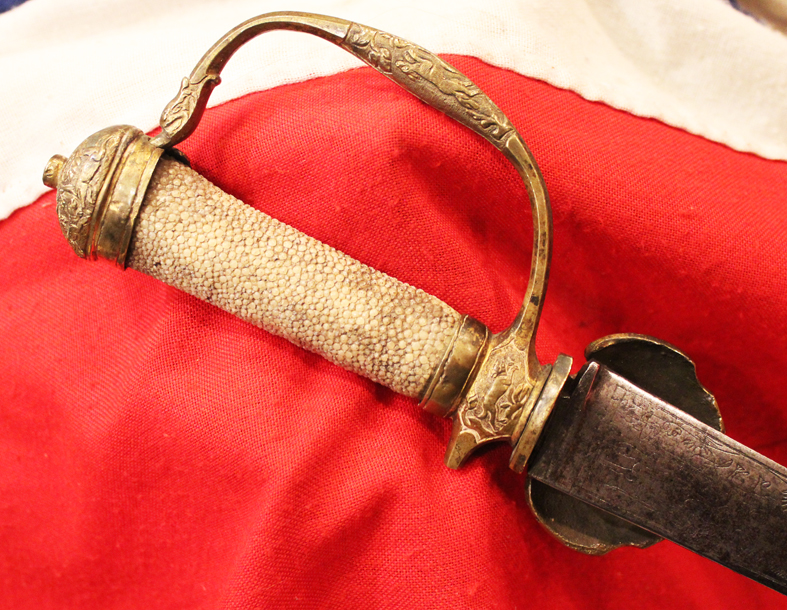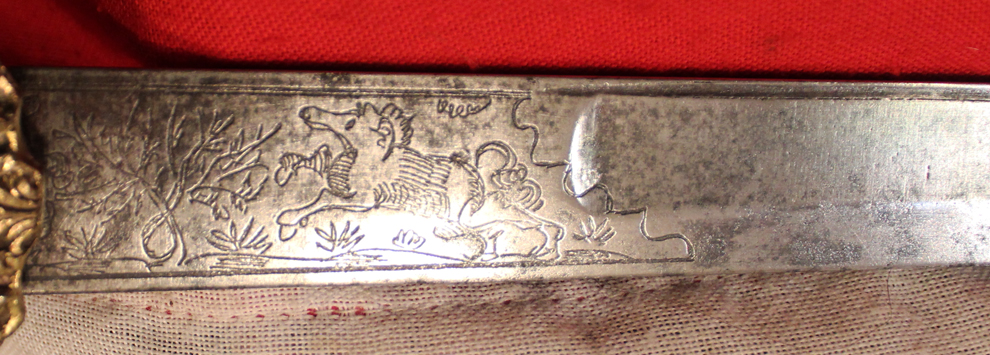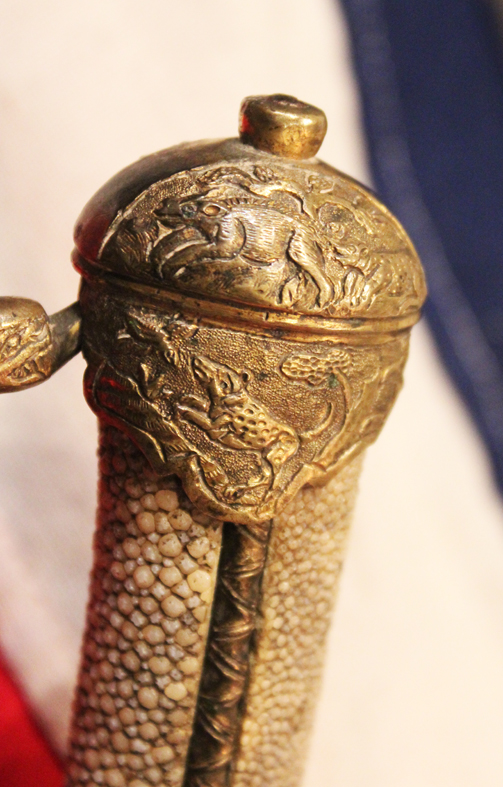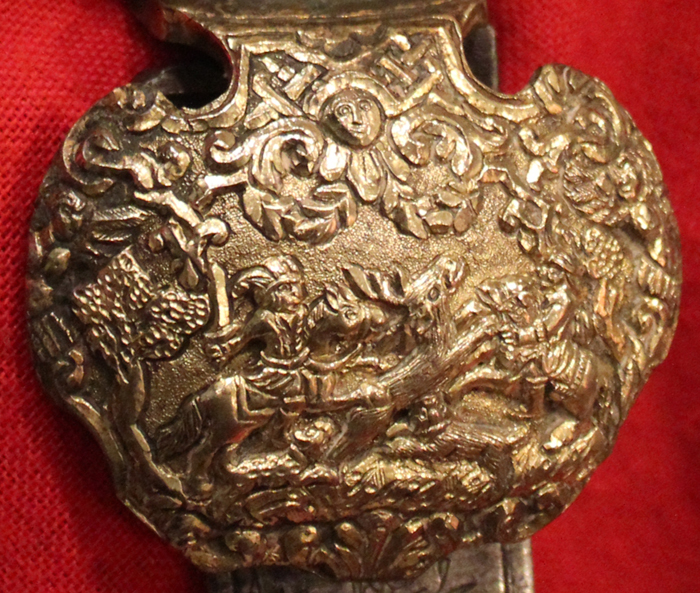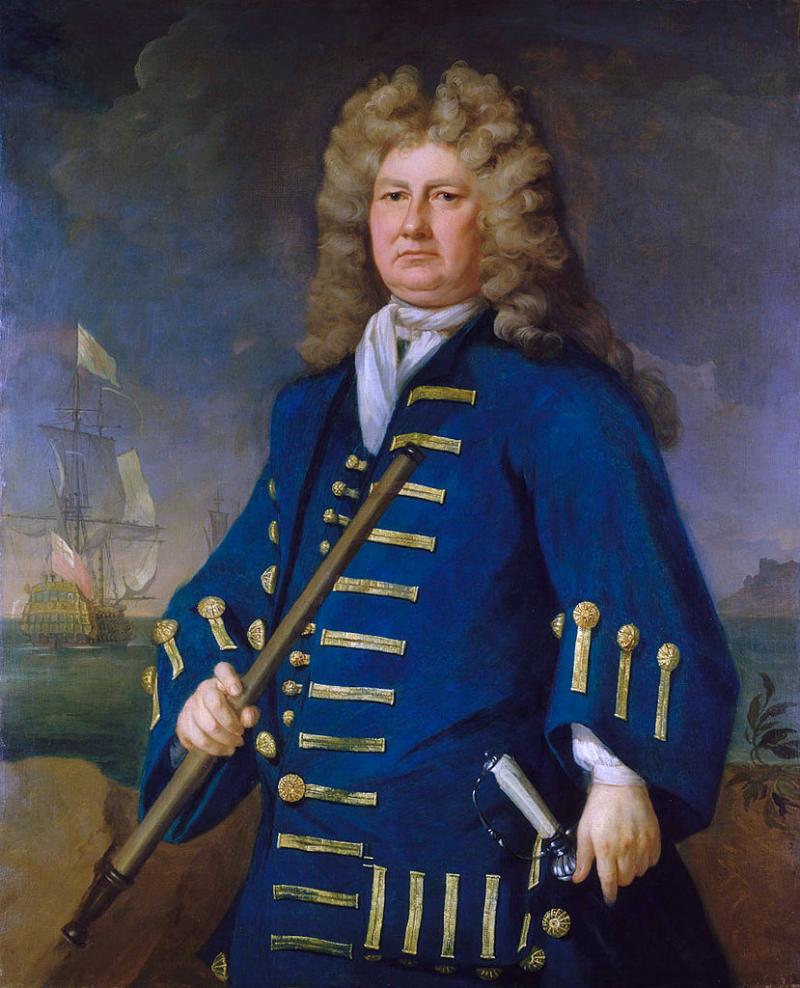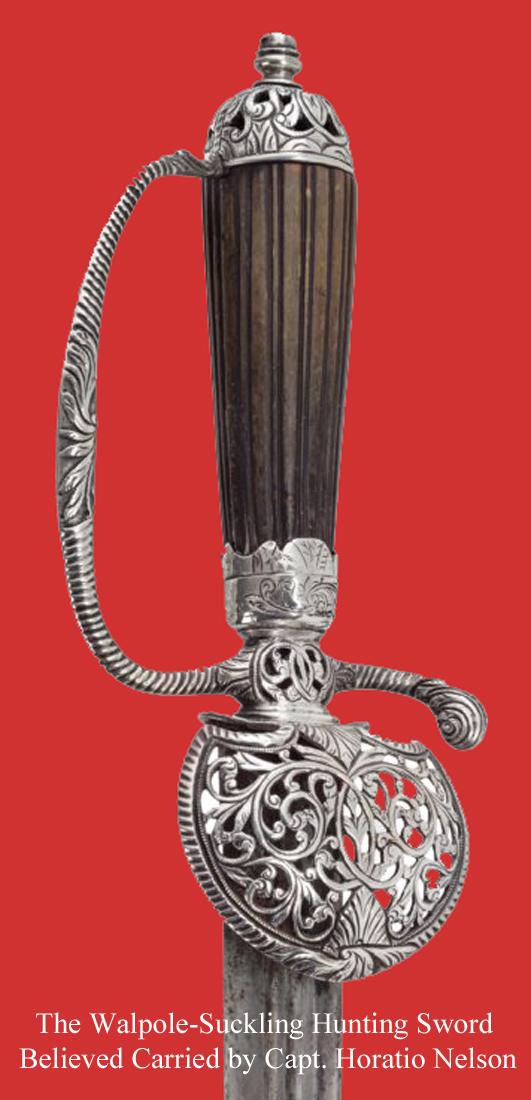A Wondrous Quality 18th Century Gilt Bronze Hilted Royal Naval Officers Sword of Hunting Hanger Form
Due to its superlative quality it was likely formerly the the property of a duke, prince, or an aristocrat of the highest status. It is also very similar to the the Walpole-Suckling Hunting Hanger Sword believed Carried by Capt. Horatio Nelson, sold by Sotheby's special treasures sale in 2003, see photo 10 in the gallery.
Originally intended for use in the boar or stag hunt, but most usually used in the early part of the 18th century by British senior officers in the Royal Navy. There are many portraits of Queen Anne period Naval admirals and the like carrying their hunting swords while in service aboard ship, as it was the perfect size for close combat use, aboard a well and profusely rigged man o’ war.
In the gallery is a portrait of Admiral Benbow holding his very similar hunting sword, another of Admiral George Churchill with his same sword, and once again with his same hunting sword Admiral Sir Cloudsley Shovell.
In the seminal works, 'Swords for Sea Service' by May and Annis, shown in photographed plates 80 and 81, are two other 18th century hunting swords used by noted naval officer's, one by Galfridus Walpole, said to have been used by Nelson and the other sword of Admiral Don Francisco Xavier Winthuysen, that was surrendered to Commodore Nelson at the Battle of St Vincent in 1797
Finest gilt bronze hilt engraved and cast throughout of scenes of hunts. With sharkskin grip, cast repousse decorated shell guard, knuckle bow and pommel, decorated with full relief very finely engraved blade with hunting scenes of wild boar. The wild boar is the ancestral species of the domestic pig. It is native across much of Central Europe
Unlike the Romans for whom hunting boar was considered a simple pastime, the hunting of boars in Medieval Europe was mostly done by nobles for the purpose of honing martial skill. It was traditional for the noble to dismount his horse once the boar was cornered and to finish it with a dagger. To increase the challenge, some hunters would commence their sport at the boars mating season, when the animals were more aggressive. Records show that wild boar were abundant in medieval Europe. A charging boar is considered exceptionally dangerous quarry, due to its thick hide and dense bones, making anything less than a kill shot a potentially deadly mistake. Hunting dogs have been used to hunt boar since ancient times. Boar hunting dogs are loosely divided into two categories, bay dogs, and catch dogs.
Bay dogs harass and harry the boar, keeping it cornered in one place and barking loudly. This behaviour is known as "baying" or keeping the boar "at bay". The bay dogs' barking alerts the hunters to the bay, so that the hunter may catch up and kill the boar.the clergy demanding tribute from commoners in the form of boar carcasses or body parts. In 1015 for example, the doge Ottone Orseolo demanded for himself and his successors the head and feet of every boar killed in his area of influence.
In this period, because of the lack of efficient weapons such as guns, the hunting of boars required a high amount of courage, and even the French king Philip IV died from falling off his horse when charged by a boar.
The sword is in fine condition for its age. It lacks the small quillon end
Code: 21041
1195.00 GBP



